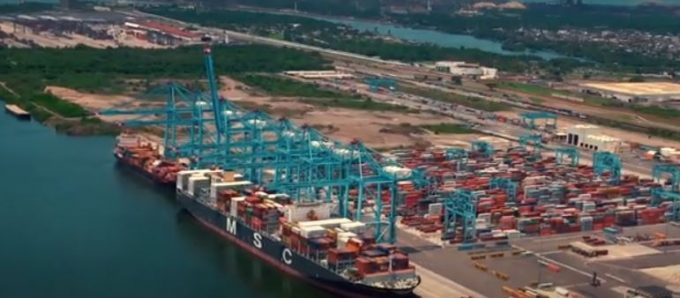Purchase of Panama railway 'a significant opportunity' for ambitious APMT
Maersk’s port arm, APM Terminals, has bought the Panama Canal Railway Company (PCRC), which runs ...

On Friday, Hapag-Lloyd issued a customer advisory warning of delays at the port of Lazaro Cardenas – cargo moving to and from the port hit by congestion at the Hapag-Lloyd and APM terminals.
The news was hardly a bolt out of the blue. Mexico’s largest Pacific port has suffered from congestion for more than three months, partly the result of a surge in car shipments, but problems with the rail system have also affected box traffic.
Volumes started to build after trucker ...
'Disastrous' DSV-Schenker merger would 'disrupt European haulage market'
'Chaos after chaos' coming from de minimis changes and more tariffs
List of blanked transpac sailings grows as trade war heats up and demand cools
Shippers in Asia restart ocean shipment bookings – but not from China
Forto 'sharpens commercial priorities' as it lays off one-third of staff
India withdraws access for Bangladesh transhipments, in 'very harmful' decision
'Tariff hell' leaves industries in limbo – 'not a great environment to plan'
Temporary tariff relief brings on early transpacific peak season
Pre-tariff rush of goods from US to China sees air rates soar, but not for long
Asian exporters scramble for ships and boxes to beat 90-day tariff pause
De minimis-induced ecommerce demand slump could cripple freighter operators
Forwarders 'allowing the fox into the chicken run' by supporting 'hungry' carriers
Hapag 'took the bigger risk' when it signed up to Gemini, says Maersk
'Restoring America's maritime dominance' – stop laughing at the back of the class
Navigating tariffs: 'like trying to solve a Rubik's cube while colour-blind'

Comment on this article